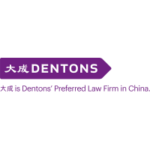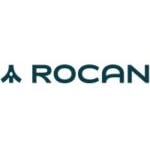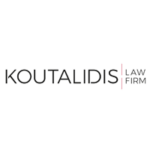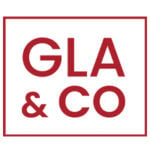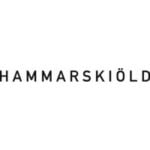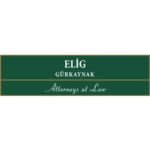-
Overview
Concentrations that meet the applicable turnover thresholds in Romania must be notified to the Romanian Competition Council (in Romanian: Consiliul Concurenței) and cannot be completed until clearance is obtained.
Under the one-stop-shop principle, concentrations with a Community dimension will be subject to review and approval by the European Commission and not by the Romanian competition authority. In certain cases, the European Commission may refer concentrations with a Community dimension to the Romanian competition authority for review, and this has occurred in several past cases.
The Romanian Competition Council (in Romanian: Consiliul Concurenței) is the Romanian independent administrative authority in charge with the control of concentrations in Romania. It reviews notifications and decides whether to approve the concentration, either unconditionally or with conditions, or to prohibit it.
On average, the Romanian competition authority reviews approximately 75 concentrations annually, with most transactions handled under the simplified procedure, likely receiving clearance within two months from registration. Around 1-2 transactions are conditionally approved each year, with their review process potentially taking several months.
The review process is divided into two stages: Phase I and Phase II, similar to the European Commission’s procedure. While there is no formal pre-notification framework under Romanian law, the Romanian competition authority must confirm the completeness of the filing.
This marks the ‘effective date’ when the review clock starts, and the timeline for the decision of the Romanian competition authority is as follows:
1) In Phase I, the Romanian competition authority reviews the transaction within 45 days from the ‘effective date’.
2) If the Romanian competition authority requires additional time for assessment, or if appropriate remedies are not proposed during Phase I, Phase II is initiated. The Romanian competition authority informs the parties of its intent to move to Phase II within the Phase I period. The Phase II review period extends the assessment to five months, during which the Romanian competition authority may clear or prohibit the transaction. If no decision is issued within five months, the transaction is considered automatically cleared.
During either phase, the Romanian competition authority may refer the case to the European Commission if it believes the Commission has jurisdiction, or it may close the proceedings with a simple letter if the transaction is not subject to Romanian merger control.
The Romanian competition authority final decision is communicated to the notifying parties, and a non-confidential version is published on the authority’s website.
-
Is notification compulsory or voluntary?
Notification to the Romanian competition authority is mandatory for concentrations (as defined in question 4) that meet the Romanian jurisdictional thresholds, as outlined in question 6.
Please refer to question 3 regarding the details on the standstill obligation and the relevant exceptions and applicable waiver.
Additionally, consider the procedure for national security screening in Romania, as well as any sector-specific screening requirements from Romanian sector regulators (such as media, environment, banking and finance etc).
-
Is there a prohibition on completion or closing prior to clearance by the relevant authority? Are there possibilities for derogation or carve out?
Yes, the concerned parties are subject to a standstill obligation and are prohibited from completing or implementing any part of the transaction before clearance is granted by the Romanian competition authority. Should the parties proceed with closing before obtaining clearance, the authority may impose interim measures to maintain market competition or even order the dissolution of the transaction. Additionally, fines may be applied.
There are two exceptions to this standstill obligation:
- The RCC may grant an exemption from the standstill obligation, allowing the concentration to proceed under certain conditions, typically following a request from the parties. However, such waivers are rarely granted and only in exceptional cases, such as when the target is near insolvency.
- In the case of a public bid or a series of transactions involving securities, specific conditions apply (the filing and approval are still necessary) —please refer to our comments in question 16 for further details.
Apart from these specific exceptions, Romanian law does not provide for a local carve-out provision that would allow the closing of a transaction before the review process is complete.
-
What types of transaction are notifiable or reviewable and what is the test for control?
The Romanian merger control regime applies to transactions that qualify as an ‘economic concentration.’
Similar to European legislation, a concentration is deemed to arise under Romanian merger control law when a change of control on a lasting basis results from:
- The merger of two or more previously independent undertakings or parts of undertakings; or
- The acquisition, by one or more persons already controlling at least one undertaking, or by one or more undertakings, whether through the purchase of securities or assets, by contract, or by any other means, of direct or indirect control over the whole or parts of one or more other undertakings.
The creation of a joint venture that performs all the functions of an autonomous economic entity on a lasting basis is also considered a concentration.
Control, in the context of Romanian merger control (in line with EU legislation), is defined as the ability to exercise decisive influence over an undertaking. This ability may arise from rights, contracts, or other means, either individually or in combination, taking into account factual or legal considerations, including:
- Ownership or the right to use all or part of the assets of an undertaking;
– Rights or contracts that grant decisive influence over the composition, voting, or decisions of an undertaking’s managing bodies.
Control may be:
- De jure or de facto;
- Positive or negative; and
- Sole or joint.
Romanian merger control follows the EU framework for assessing control, covering transactions that lead to a change in the nature of control, such as a shift from sole to joint control or vice versa, or the addition of a jointly controlling shareholder.
Certain situations do not constitute a concentration, in line with EU merger control rules (a number of specific conditions apply to each case):
- control is acquired and exercised by an office-holder within liquidation, winding up, insolvency, cessation of payments, compositions or analogous proceedings;
- securities are acquired and exercised by credit institutions or other financial institutions or insurance companies, the normal activities of which include transactions and dealing in securities for their own account or for the account of others, on a temporary basis, with a view to reselling them within one year of the date of acquisition.
- the control is obtained by a financial holding company that has the purpose of acquiring holdings in other undertakings, to manage and valorise such holdings, without involving directly or indirectly in the managing the undertakings in which they have holdings.
- Intra-group reorganisation or restructuring.
If two or more concentrations occur between the same parties (individuals or entities) within a two-year period, they will be considered a single economic concentration occurring on the date of the last transaction.
Interdependent transactions, such as conditional transactions, parallel acquisitions or serial acquisition of control, may also be treated as a single transaction under certain conditions. This also applies to a series of transactions involving securities.
-
In which circumstances is an acquisition of a minority interest notifiable or reviewable?
Minority shareholdings are not currently subject to the control of the Romanian competition authority unless they confer control, and the national turnover thresholds are met (or the case was referred by the Commission). An analysis should be conducted to determine if control is conferred through specific veto rights attached to the minority interest. Examples include preferential rights to appoint a majority of the governing body or veto strategic decisions like budget, business plan or investment approvals or management changes. However, veto rights designed to protect financial interests do not confer control.
The acquisition of non-controlling minority interests may also require notification under the foreign investment screening rules in Romania, and/or the merger and/or foreign investment screening rules of other Member States.
-
What are the jurisdictional thresholds (turnover, assets, market share and/or local presence)? Are there different thresholds that apply to particular sectors?
Concentrations must be notified and approved by the Romanian competition authority prior to implementation if they meet the following thresholds based on turnover:
- The combined aggregate worldwide turnover of all the undertakings concerned is more than RON equivalent of €10 million; and
- The Romanian turnover of each of at least two of the undertakings concerned is more than RON equivalent of €4 million.
These thresholds apply regardless of the business sector.
The undertakings concerned are different depending on the type of transaction.
-
How are turnover, assets and/or market shares valued or determined for the purposes of jurisdictional thresholds?
Turnover is calculated based on several principles, depending on the type of transaction. For acquisitions or mergers, the turnovers of the acquirers and merging companies are assessed at the group level. For the target company, turnover is calculated considering its subsidiaries/the controlled companies. The seller’s turnover is excluded unless the seller retains control.
Turnover includes revenue from product sales and services, deducting the fiscal duties and the exports performed directly and/or via intermediaries, including the intra-EU sales. The internal sales (within the group companies) should be separately considered to avoid double counting.
The RCC typically refers to the latest audited financial year before the transaction. Adjustments should be made for permanent acquisitions or disposals of entities/assets completed during and/or after the end of the relevant financial year. There are specific rules applicable to the geographical allocation of the turnover depending on the type of the products and/or activities sold and/or performed. Sector-specific rules apply to industries like tourism and advertising (where the service is sold through intermediaries), or financial holdings, investment funds, credit institutions and other financial institutions, insurance companies.
-
Is there a particular exchange rate required to be used for to convert turnover thresholds and asset values?
RON equivalent of the EURO amounts is calculated at the exchange rate published by the National Bank of Romania for the last day of the financial year before the concentration.
-
In which circumstances are joint ventures notifiable or reviewable (both new joint ventures and acquisitions of joint control over an existing business)?
A joint venture that operates on a lasting basis as an autonomous economic entity (full-function joint ventures) constitutes a concentration, requiring notification if the turnover thresholds are met. This applies to both new joint ventures and acquisitions of joint control over an existing business. The rules for establishing full functionality of the joint venture are largely similar to those under the EU merger control.
Non-full-function joint ventures are assessed under competition law concerning restrictive agreements or practices (fairly similar to the Art. 101 TFEU).
-
Are there any circumstances in which different stages of the same, overall transaction are separately notifiable or reviewable?
Yes, multiple concentrations between the same parties within a two-year period are treated as a single concentration, considered as occurring on the date of the last transaction.
Interdependent transactions such as conditional transactions or parallel acquisitions of control or serial acquisition of control, are also treated as one concentration under certain conditions. This also applies to the series of transactions in securities. If these conditions are not met, each stage may require separate notification if the thresholds are met.
Please check separately the rules of the Romanian investment screening as they may require separate filings for each transactional stage, including in cases where such stages may be considered one single transaction under Romanian competition law.
-
How do the thresholds apply to “foreign-to-foreign” mergers and transactions involving a target / joint venture with no nexus to the jurisdiction?
Foreign-to-foreign transactions that exceed the Romanian thresholds are subject to the local merger control rules, as the Romanian thresholds are based on the geographic allocation of the parties’ turnover, and these can be met irrespective if the concerned parties have a Romanian registered presence or not.
-
For voluntary filing regimes (only), are there any factors not related to competition that might influence the decision as to whether or not notify?
N/A
-
What is the substantive test applied by the relevant authority to assess whether or not to clear the merger, or to clear it subject to remedies?
Romania has adopted a similar assessment test to the one used in the majority of EU jurisdictions, i.e. a concentration will be prohibited if it would be raising significant obstacles to effective competition on the Romanian market or a substantial part of the Romanian market, in particular due to the creation or strengthening of a dominant position.
The same test applies in all economic sectors.
-
Are factors unrelated to competition relevant?
The factors unrelated to competition (as described in point 13 above) are not normally relevant to the assessment of a concentration by the Romanian competition authority.
Please note that the Romanian competition authority decision may be impacted by the Romanian investment screening results.
-
Are ancillary restraints covered by the authority’s clearance decision?
Similar with the EU legislation, the clearance decision of the Romanian competition authority will cover the ancillary restraints provided that such restrictions are both necessary and directly related to the concentration, in accordance with the relevant guidelines in this respect. While the notifying parties are not required to specifically ask for an approval of such ancillary restraints, they may bring them to the authority’s attention if they have questions or concerns as to the compliance of such restraints with competition law.
-
For mandatory filing regimes, is there a statutory deadline for notification of the transaction?
No deadline is set for submission of the notification to the Romanian competition authority. However, a transaction/concentration which is notifiable upon the Romanian legislation rules cannot be implemented before filing to and clearance by the authority. Such implementation before notification and clearance is subject to fines.
A specific case is of public takeover bids relating to securities listed on a stock exchange market or for series of transactions with securities, including with convertible securities, through which the control is acquired from different sellers, subject to the following conditions:
- the transaction is notified without any delay to the Romanian authority, and
- the acquirer of control does not exercise the voting rights attached to the securities or exercise them only to protect the value of its investment, or upon special exemption authorisation granted by the Romanian competition authority.
-
What is the earliest time or stage in the transaction at which a notification can be made?
A transaction meeting the local thresholds can be notified to the Romanian competition authority based on a document demonstrating the parties’ good-faith intention to enter into a binding agreement, such as a letter of intent, memorandum of understanding, or term sheet. For public bids, the filing can be made after the public offer is announced and the bidding procedures have commenced, under certain conditions (please refer to question 16 above).
In certain cases, the RCC may issue authorisation based solely on these preliminary documents and, where applicable, near-final drafts of the definitive agreements. However, the parties are required to inform the authority of any changes to the submitted information or documentation (this may include for example the signing of the final agreements and/or their corresponding executed versions etc).
-
Is it usual practice to engage in pre-notification discussions with the authority? If so, how long do these typically take?
The notifying party can engage in confidential discussions with the Romanian competition authority before formal notification, especially for complex transactions that may raise concerns or have complex structures and documentation, or tight closing timelines. For such cases, it’s recommended to begin pre-notification talks at least 2 weeks in advance and provide brief details (e.g., transaction structure, parties, relevant markets, estimated market shares) at least 5 days before the meeting.
-
What is the basic timetable for the authority’s review?
Upon receiving the file, the Romanian competition authority has 7 days to confirm the registration, ensuring that the filing fee is paid, and all necessary documents are included. The Romanian competition authority then has 20 days to request additional information, if needed, typically sending one set of questions for simplified cases and 2 or more sets for full cases. Such additional information should be provided under a deadline of up to 15 days (any extension of the initial deadline will be given within the maximum 15 days).
Once (all) supplementary information are received, the authority will confirm the notification as complete This marks the ‘effective date’ when the review clock starts (this period needs to start from the confirmation of the effective date of the file which could be assumed as registration date only if the authority did not ask for additional information), and the timeline for the decision of the Romanian competition authority is as follows:
- In Phase I, the Romanian competition authority reviews the transaction within 45 days from the ‘effective date’. Most cases are cleared in Phase 1, with simplified cases usually resolved within 2 months.
- If the Romanian competition authority requires additional time for assessment, or if appropriate remedies are not proposed by the parties during Phase I, Phase II is initiated. The Romanian competition authority informs the parties of its intent to move to Phase II within the Phase I period. The Phase II review period extends the assessment to five months, during which the Romanian competition authority may clear or prohibit the transaction. If no decision is issued within five months, the transaction is considered automatically cleared.
During either phase, the Romanian competition authority may refer the case to the European Commission if it believes the Commission has jurisdiction, or it may close the proceedings with a simple letter if the transaction is not subject to Romanian merger control (e.g. the transaction does not meet the national thresholds for filing, the transaction is not an economic concentration as it is not a change of control etc.).
During Phases I and II, the notifying parties can submit remedies to the authority in order to address any concerns on the transaction.
The final decision is communicated to the notifying parties, and a non-confidential version is published on the authority’s website. The notifying parties have 30 days from receiving the decision to pay the authorisation fee, the respective amount and payment details being included in the decision.
Also, the results of the investment screening impact the Romanian competition procedure.
-
Under what circumstances may the basic timetable be extended, reset or frozen?
Please refer to the details provided under question 19 above. Also, the results of the investment screening impact the Romanian competition procedure.
-
Are there any circumstances in which the review timetable can be shortened?
There are no formal mechanisms to expedite the review timetable. However, parties can request a pre-filing meeting with the authority to discuss the case and provide preliminary information, which may help facilitate a quicker review.
If the parties demonstrate a valid need for an accelerated review, the authority may work to reduce the clearance time where possible.
Note that Phase I and II timelines are suspended if the authority requests additional information.
Additionally, the results of investment screening can impact the Romanian competition procedure.
-
Which party is responsible for submitting the filing?
The party responsible for filing is the party acquiring control so this depends on the type of transaction.
In the case of a merger, joint venture or an acquisition of joint control, all merging parties, joint-venture partner or the parties acquiring joint control must submit the filing.
The acquirer of sole control will be responsible for submitting the filing.
The sellers are equally responsible for the notification with the buyers if they will continue to have control (jointly).
-
What information is required in the filing form?
Like the European ones, there are two Romanian standard notification forms, a long/ standard form and a short /simplified one.
Generally, the notification forms request information about the involved undertakings and their groups, ownership and control structures, the structure of the concentration, relevant and affected product and geographic markets, estimated market shares, and the overall market context (such as supply, demand, market entry, R&D, collaboration agreements, and industry organisations), as well as any potential efficiency gains.
In practice, most transactions qualify for a simplified procedure, which requires less detailed information than standard filings. The focus of this review is primarily on confirming that the conditions for applying the simplified procedure have been met.
A simplified procedure may be used in transactions where (i) there is no overlapping between the parties, (ii) there are no affected markets, (iii) the relevant joint venture has/is estimated to have less or no activity in Romania.
Horizontal affected markets are those in which both parties have a combined market share of 20% or more. Vertical affected markets are upstream or downstream markets in which one or both parties have an individual or combined market share of 30% or more.
The authority has discretion to decide whether the simplified or standard procedure should be used (for example in case there are no good relevant data for market share estimates, there are no good precedents on the definition of the relevant markets etc), even after the parties have submitted a short form, in which case additional information must be provided.
-
Which supporting documents, if any, must be filed with the authority?
In addition to the notification form, the notifying party must submit other relevant documents (also translated into Romanian language), such as:
- the financial statements of the parties to the transaction and of their parent companies for the last audited financial year;
- the full agreements giving rise to the transaction;
- ancillary agreements;
- analysis, reports or studies that are considered relevant;
- reports or documents prepared by or requested from third parties for the management body, shareholders, investors or analysts of the undertakings concerned.
- cooperation agreements;
- the power of attorney (if the notification is submitted through a representative);
- evidence of payment of the filing fee.
-
Is there a filing fee?
There is a filing fee of RON 4,775 (approx. EUR 1,000) to be paid when submitting the notification.
Once the decision is issued, there is an authorisation fee to be paid within 30 days of receiving the decision copy. The level of the authorisation fee is included in the approval decision.
The amount depends on the economic significance of the transaction (i.e. the level of turnover in Romania in the year preceding the transaction of either the merging entities, the parent companies of a newly established joint venture, of the existing joint venture, or of the acquired target company or assets) and the efforts of the authority (Phase 1 or Phase 2 clearances and ranges between €10,000 and €50,000.
In case the relevant financial statements of the preceding year are not final at the date of the decision, the authorisation fee is calculated on the most recent final financial statements and recalculated once the relevant financial statements became final.
Both fees are to be paid by the party responsible to file the transaction.
-
Is there a public announcement that a notification has been filed?
The receipt of a notification is announced through a press release on the authority’s website within a week of the file’s registration, with commercially sensitive information protected. The parties are required to provide a draft press release, including their names, business activities, and whether the simplified procedure is being considered, as part of the notification form.
A similar press release will be published once the authority has issued its decision on the case.
-
Does the authority seek or invite the views of third parties?
The press release will invite third parties to provide feedback on the potential impact of the transaction within a certain deadline from publication.
Additionally, public consultation/market test is specifically required when remedies are proposed, with third parties (parties’ clients, suppliers, or competitors or other interested parties) being invited to offer input, including through targeted questionnaires in such cases.
-
What information may be published by the authority or made available to third parties?
The notification file itself will not be made published. However, interested third parties may request access to the transaction file through a specific procedure which ensures the protection of business secrets and other confidential information. A non-confidential version of the final decision will be published, excluding business secrets and other confidential information. In exceptional cases, the notifying parties may ask the authority to delay the publication of the press release, and the authority has discretion in this matter. This exception is unlikely to apply in complex cases or where there is a need to carry out a market test.
-
Does the authority cooperate with antitrust authorities in other jurisdictions?
The Romanian authority exchanges information with the European Commission, within the European Competition Network, but also with certain other authorities that are not part of the ECN. Cooperation will typically take place if transactions raise similar substantive or jurisdictional issues in several jurisdictions. For instance, authorities may discuss conceptual frameworks, theories of harm or appropriate remedies. However, confidential information of the parties submitted within a notification file may be exchanged only if the parties have granted a special waiver of confidentiality.
Any confidential information provided in the notification file can only be shared if the parties have specifically granted a confidentiality waiver.
However, the Romanian authority collaborates with the European Commission and other ECN authorities through the European Competition Network (ECN). Such cooperation typically occurs when transactions present similar substantive or jurisdictional issues across multiple jurisdictions. Authorities may exchange views on issues like conceptual frameworks, theories of harm, or potential remedies. Cooperation with other non-ECN authorities is also possible.
-
What kind of remedies are acceptable to the authority?
Romanian legislation provides that either behavioural or structural remedies may be acceptable or appropriate where the proposed concentration raises significant competition concerns. However, structural (divestiture) commitments are preferred.
The Romanian authority has accepted both structural and behavioural remedies in the past.
-
What procedure applies in the event that remedies are required in order to secure clearance?
During the review process, the authority will inform the notifying parties of the concerns raised by the transaction under review, and the notifying parties are expected to propose remedies to address these concerns.
The remedies may be proposed both during Phase I – before the effective date of the notification or within two weeks after such date and during Phase II – within 30 days from the start of the investigation for Phase II, with the possibility for the authority to extend this deadline by up to 15 days upon request of the notifying parties if there are exceptional circumstances justifying the extension.
As the Romanian competition authority will only carry out an in-depth market analysis in Phase II, the remedies proposed in Phase I must be comprehensive enough to address all identified competition concerns, even if some of these concerns could be resolved after a Phase II investigation.
It is for the Romanian competition authority to decide whether the proposed remedies address the competition concerns, but the notifying parties are expected to provide the relevant information necessary for the Authority to make its decision. The Romanian competition authority will normally conduct a market test of the remedies and invite third parties to comment on the proposed remedies.
Such remedies become binding from the date of the authority’s clearance decision. A monitoring trustee may be appointed for such remedies.
-
What are the penalties for failure to notify, late notification and breaches of a prohibition on closing?
Failure to notify a concentration prior to its implementation may be sanctioned by a fine of up to 10% of the total global turnover of the relevant parties in the year preceding the decision imposing the sanction. The relevant turnover is the total global turnover of the infringing party, i.e. the undertaking responsible for filing the concentration.
Additionally, failure to comply with the standstill obligation (i.e. a notified concentration cannot be implemented before the authority has issued its decision) may be sanctioned by a fine of up to 10% of the total global turnover of the relevant parties in the year preceding the decision imposing the sanction. The relevant parties in this case may be both acquirer and the target (the sellers).
The amount of the fine is determined considering the gravity and duration of the infringement as well as any mitigating and/or aggravating circumstances. However, the minimum applicable fine cannot be less than 0.5% of the Romanian total turnover (further reductions may apply in case of settlement and mitigating circumstances, but the final fine cannot be reduced below 0.2% of the Romanian total turnover).
Failure to comply with the remedies/conditions of approval will be sanctioned in the same way as failure to notify.
For sanctioned companies which are not registered in Romania specific turnover calculation is to be considered.
-
What are the penalties for incomplete or misleading information in the notification or in response to the authority’s questions?
Fines between 0.1% and 1% of the total global turnover of the infringing party in the year prior to the sanctioning decision being issued may be imposed for providing incorrect, incomplete or misleading information or for failure to provide such information.
-
Can the authority’s decision be appealed to a court?
The notifying party may appeal against the decision of the authority before the Bucharest Court of Appeal within 30 days from the date of notification of the decision. The decision of the Bucharest Court of Appeal may also be appealed.
In addition, third parties with a legitimate interest may appeal against such a decision within 30 days from the date of its publication. This is rarely done in practice, but there have been some cases in the past.
An appeal against a decision on interim measures can be lodged within 20 days, and in this case, there is a 5-day time limit for challenging the court’s decision.
Suspension of the decision can be requested by paying a fee calculated according to the administrative procedure.
-
What are the recent trends in the approach of the relevant authority to enforcement, procedure and substantive assessment?
The Romanian competition authority continues to be active. The Romanian competition authority prefers treating as many concentrations as possible under the simplified procedure. On average, around 1-2 transactions are conditionally approved each year, with their review process potentially taking several months. Both behavioural and structural remedies were acceptable to the authority in the last conditional decisions.
In 2023, the authority examined about 75 notifications with one case scrutinised in the second phase. While some of the published cases contain relevant information for certain industries, no fundamental shifts in merger control practice took place.
In terms of enforcement, the Romanian authority has publicly announced that it will pay an even greater attention in the coming years to breaches of the obligation to notify reportable transaction and of the stand-still obligation. The authority works with the Romanian Commercial Registry (that has a data base of all share capital changes that need to be registered under corporate regulations) to identify such cases more easily and some investigations started from this corroboration of such data bases.
As the Romanian competition authority closely follows the European Commission’s policy on merger control, a reaction from the Romanian competition authority is expected regarding the possible amendment of the Romanian legislation following the recent court decisions on Illumina / Grail / interpretation of Article 22 of the EU Merger Regulation.
The past twelve months have seen the largest number of merger control proceedings in Romania over more than a decade – 94, up from an average of around 65-70. This is indicative of a steady growth in the M&A activity, which is likely to be sustained in 2023. Indeed, despite the complex geopolitical climate and a burdensome financial context, Romania has had the second largest inflow of FDI between EU Member States in recent years.
While there are no legislative updates planned for merger control, the new regime for foreign investment screening is very likely to impact the merger control proceedings, on both procedural grounds (longer review periods and slightly less predictable outcomes), as well as on substantial ones (remedies, triggering events, etc.).
In addition, Romania’s investment screening rules are likely to continue to have an impact on merger control proceedings, given the close connection between the two concepts in Europe as well as similarities and differences between the two local legal frameworks.
-
Are there any future developments or planned reforms of the merger control regime in your jurisdiction?
There are no planned reforms for merger control regime in Romania.
However, as the Romanian competition authority closely follows the European Commission’s policy on merger control, a reaction from the Romanian competition authority is expected regarding the possible amendment of the Romanian legislation following the recent court decisions on Illumina / Grail / interpretation of Article 22 of the EU Merger Regulation.
In addition, the regulation on investment screening in Romania is expected to be extended/detailed in terms of notification thresholds and procedure, as well as to implement any changes that the European Commission will further consider for the regulation on foreign direct investment (FDI) screening (Regulation 2019/452/EU).
Romania: Merger Control
This country-specific Q&A provides an overview of Merger Control laws and regulations applicable in Romania.
-
Overview
-
Is notification compulsory or voluntary?
-
Is there a prohibition on completion or closing prior to clearance by the relevant authority? Are there possibilities for derogation or carve out?
-
What types of transaction are notifiable or reviewable and what is the test for control?
-
In which circumstances is an acquisition of a minority interest notifiable or reviewable?
-
What are the jurisdictional thresholds (turnover, assets, market share and/or local presence)? Are there different thresholds that apply to particular sectors?
-
How are turnover, assets and/or market shares valued or determined for the purposes of jurisdictional thresholds?
-
Is there a particular exchange rate required to be used for to convert turnover thresholds and asset values?
-
In which circumstances are joint ventures notifiable or reviewable (both new joint ventures and acquisitions of joint control over an existing business)?
-
Are there any circumstances in which different stages of the same, overall transaction are separately notifiable or reviewable?
-
How do the thresholds apply to “foreign-to-foreign” mergers and transactions involving a target / joint venture with no nexus to the jurisdiction?
-
For voluntary filing regimes (only), are there any factors not related to competition that might influence the decision as to whether or not notify?
-
What is the substantive test applied by the relevant authority to assess whether or not to clear the merger, or to clear it subject to remedies?
-
Are factors unrelated to competition relevant?
-
Are ancillary restraints covered by the authority’s clearance decision?
-
For mandatory filing regimes, is there a statutory deadline for notification of the transaction?
-
What is the earliest time or stage in the transaction at which a notification can be made?
-
Is it usual practice to engage in pre-notification discussions with the authority? If so, how long do these typically take?
-
What is the basic timetable for the authority’s review?
-
Under what circumstances may the basic timetable be extended, reset or frozen?
-
Are there any circumstances in which the review timetable can be shortened?
-
Which party is responsible for submitting the filing?
-
What information is required in the filing form?
-
Which supporting documents, if any, must be filed with the authority?
-
Is there a filing fee?
-
Is there a public announcement that a notification has been filed?
-
Does the authority seek or invite the views of third parties?
-
What information may be published by the authority or made available to third parties?
-
Does the authority cooperate with antitrust authorities in other jurisdictions?
-
What kind of remedies are acceptable to the authority?
-
What procedure applies in the event that remedies are required in order to secure clearance?
-
What are the penalties for failure to notify, late notification and breaches of a prohibition on closing?
-
What are the penalties for incomplete or misleading information in the notification or in response to the authority’s questions?
-
Can the authority’s decision be appealed to a court?
-
What are the recent trends in the approach of the relevant authority to enforcement, procedure and substantive assessment?
-
Are there any future developments or planned reforms of the merger control regime in your jurisdiction?


